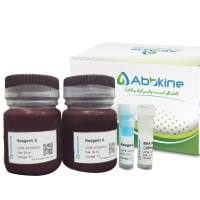蛋白质相互作用
互联网
Interaction Trap/Trap Two-Hybrid System
・ Yeast Two-Hybrid System (Finley Lab)
This is one of the most comprehensive and detailed guide to yeast two-hybrid system technique with introduction to its background. The following procedures are described: mating assay - small scale for tens of different bait or prey proteins, collecting bait (and prey) strains, large scale for hundreds of different bait or prey strains, interaction mating assay with other yeast two-hybrid systems, recording results, interpreting interaction data, qualitative interpretation and more...
・ Yeast Two-Hybrid System (Finley Lab)
The updated version for scaling up the these techniques to facilitate characterization of large networks of interacting proteins. It is also useful for individual hunts.
・ Performing a hunt by interaction mating (Finley Lab)
In this protocol one strain is transformed with library DNA and the transformants are collected and frozen in aliquots. For each interactor hunt, an aliquot of this frozen "pretransformed library strain" is thawed and mixed with an aliquot of a bait strain transformed with the bait expression plasmid. Overnight incubation of the mixture on a YPD plate results in mating - i.e., cells of one strain fuse with cells of the other strain to form diploids. The diploids are then exposed to galactose to induce expression of the library encoded proteins, and interactors are selected in the same manner as in the standard hunt protocols.
・ Yeast Two-Hybrid System: part A: screen preparation (Technical Tips Online) (To view this page, free registration is needed)
The two-hybrid system (THS) is a powerful technique for identifying new proteins involved in specific biological processes. It allows for the rapid isolation of the gene that codes for a protein that interacts with a specific protein of interest. This Protocol describes procedures useful for the `Fields' THS, based on the GAL4 transcription factor including
o Construction of the GAL4BD :bait gene fusion plasmid
o Choosing the right THS reporter strain
o Testing the BD:bait plasmid for auto-activation
o Expression of your fusion protein
o Amplifying the AD:cDNA library
・ Yeast two-hybrid system: part B--screening procedure (Technical Tips Online)
・ Yeast two-hybrid system: part C--characterizing positives (Technical Tips Online )
・ Two Hybrid System Transformation (Gietz Lab)
This Protocol is for 2 Hybrid system screens
Affinity Purification of GST Fusion Proteins
-
Purification of GST Fused Proteins (Contributed by Chia Jin Ngee )
Many people have vented out frustration over insoluble GST-fused proteins. This is a protocol for enzymatically active soluble GST-fused proteins. All GST-fused proteins are rendered soluble with this technique though enzyme activitiy can range from 30-90%.
-
GST Fusion Protein Purification from Yeast (Dohlman Lab)
・ Purification of MBP (maLTose-Binding Proteins) Fused Proteins (PMCI)
・ Purification of His-tagged proteins from Sf9 cells under native conditions (Brent Graveley)
-
Purification of GST Fused Proteins (PMCI)
- GST-Fusion Protein Purification (Mark's Lab)






